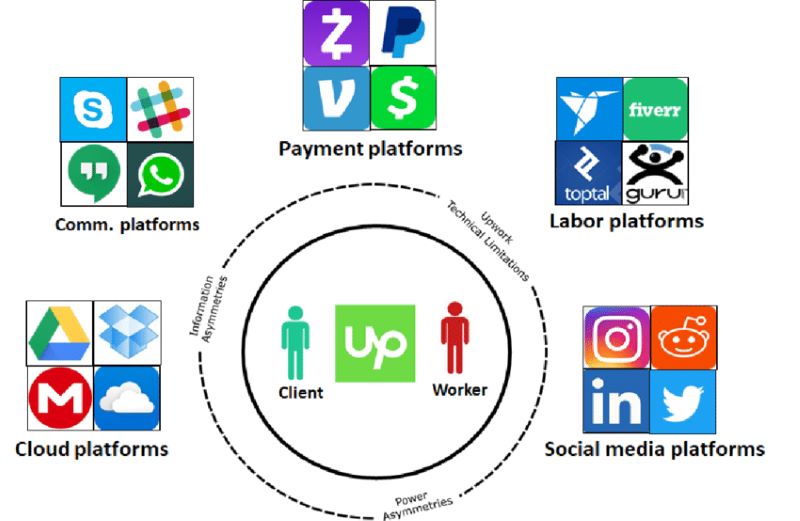As an expert navigating content moderation on digital platforms, I see the day-to-day battles we face online. Think of the internet as a bustling city – it’s a hub of activity where not every alley is safe. Just like cities need rules to keep order, digital spaces need thoughtful moderation to protect users. Our journey here uncovers how we can control content without stifling creativity. We’ll dive into crafting policies that guard against the dark side of user-generated content and find that sweet spot where speech stays free, but the digital world obeys the law. Get ready to explore the online minefield with me, your seasoned guide, ensuring every step is safe yet allows the vibrant digital life to flourish.
Understanding Content Moderation Strategies
Implementing Effective Policies for User-Generated Content Control
When we let people share online, we face a big question. How do we keep it safe? We need rules that make sense and work well. This means setting up good plans for managing what users post. It’s like a guide telling people what’s okay to share and what’s not. We check words and pictures to stop mean or harmful stuff from spreading.
Moderation tools and technology help catch bad content. But they don’t catch it all. We use smart computers, AI, to help. But they’re not perfect. We must work with people who check things too. We call them human moderation teams. These teams help when AI misses something or gets it wrong.
Hate speech detection and cyberbullying prevention are key. We teach AI to look for words or images that hurt others. When it finds them, it flags them for review. The human teams then take a closer look. It’s important because real people can understand better when someone is just joking or really means to hurt.
We also have to follow rules, the digital platform regulations. These keep everyone in line. They also make us ask hard questions. What’s okay to say? What crosses the line? Each online place has its own rules, called terms of service. We all have to agree to these when we join.
We keep watch over what’s posted using user behavior analysis. This helps us see patterns. Who posts what and when? This info lets us adjust our tools better. It helps keep users from harm.
Balancing Freedom of Speech with Digital Platform Regulations
Freedom to speak our minds is very important. But on the internet, things get tricky. We don’t want to silence people, but we do need some limits. We need to stop lies, fake news, and stuff that can really hurt.
Social media governance is how we do it. We let people talk but step in when needed. For example, we don’t allow fake stories that trick others. This keeps everyone safe but lets them share ideas too.
Balancing freedom of speech with regulation isn’t easy. Laws from place to place are different. This means we’re always learning. We want everyone to express themselves while staying within the lines.
When someone thinks we got it wrong, they can tell us. This is the appeal process for moderation. It lets users tell their side. It’s important because it keeps us fair. It lets us learn from our mistakes.
We keep our eyes open for tricks that break the rules. These are tough to spot. But with people and AI working together, we’re getting better at it. Online community management is a team effort. And I’m proud to be part of the team that keeps our digital world a safe space for sharing.
The Role of Technology in Moderation
Deploying AI in Content Regulation and Automated Filtering Systems
AI changes how we handle the flood of posts online. Smart tech looks at every single post. It hunts for bad words and toxic stuff. This tech works fast, way faster than a person can. It keeps an eye out for hate talk and bullying. AI tools can learn, which means they get better over time. They peek into what’s posted, spot bad content, and yank it.
AI has a big job. Platforms toss tons of info at it. It has to be sharp to catch the nasty bits. But it’s not perfect. AI can miss things or get it wrong sometimes. To do it right, it mixes smart rules and learning from mistakes. So, it’s like a guard, watching out for trouble.
One key thing is that AI helps before harm’s done. This is better than fixing things after they go wrong. Plus, it can stop bullies and hush lies before they spread.
But it’s tricky, too. Things like jokes or news can look like bad stuff to AI. That’s where humans come in. With people and tech teaming up, we find a good balance. Humans check the AI’s work. They add the human touch AI can’t.
The Human Element: Integrating Human Moderation Teams with Tech Solutions
Humans are a big part of cleaning up online messes. They bring heart and smarts AI can’t match. People see what machines miss. They get jokes and can tell what’s real or fake. That’s what makes them important. They team up with AI to keep the online world safe.
When we mix people and machines, we help protect folks. Plus, this mix helps keep free talk alive. People can say a lot, but rules help keep things civil. And there are lots of rules to play by. People help make sure those rules are fair and followed.
Sometimes someone will think we didn’t get it right. They want us to take another look. That’s why we have ways for folks to tell us. They can share their side, and we can check again. This means sometimes we say we’re sorry and fix our call.
But what about the big picture? We have to look at laws around the world. We have to make sure we’re doing what’s right, everywhere. A tough job, but we stay on top of it. This is how we help platforms be good places for all.
In the end, we want to keep you safe and free to chat. It’s all about balance, smarts, and keeping it real. Tech and people work hand in hand. That’s how we trudge through the online jungle. It’s not a walk in the park, but we’re always finding ways to do it better.
Upholding Legal and Ethical Standards Online
Intellectual Property Enforcement and Platform Liability Laws
In the world of online content, laws keep things fair. They make sure no one steals your work. They also decide if a site is to blame when users share content they shouldn’t. I know this well. My job is to help sites follow these laws. We make sure they don’t get in trouble and that they keep your work safe.
These laws can be tough to understand. Sites can get into big trouble if they don’t follow them. It’s my task to prevent that. We use special tech and rules to catch when someone shares stuff they shouldn’t. If they slip through, we sort it out fast. This protects the site and the person who made the original work.
Doing this right means working with all sorts of people. We talk to lawyers, tech pros, and folks who make stuff. We make plans to keep sites safe from big mistakes. It’s like a puzzle, putting all the pieces just right. It’s hard but we need to do it. It’s not just about being fair. It’s about keeping the trust of the people who use the site.
Tackling Privacy Concerns in Moderation and Transparency in Content Removal
Keeping your info private while managing content is key. Imagine you share something online. You would want to be sure no one uses it wrong. I make sure that sites handle your info with great care. They check posts without being sneaky. If they need to remove your post, they tell you how and why.
Doing this right is a big deal. If people don’t trust a site, they won’t use it. That’s why we work hard to make clear rules. When we take down a post, we explain why. We let you ask us to check again if you don’t agree. We’re open about how we work. That way, you feel safe and know your rights.
It’s about balance. We respect your privacy and explain why we do what we do. Having clear rules makes this easier. It lets you know what’s okay to share and what’s not. When rules are clear, it’s easier to say why a post was removed. It’s like a game where everyone knows the rules. It lets us play fair and keep things safe.
Let me tell you, it’s tough to handle this right every time. Mistakes can happen. But we learn and get better. I keep teams on their toes, using tech and smarts. We want people to feel they can share without worry. We also want them to trust they’re being treated fair. I’m right there in the middle, making sure it’s all running smooth.
Nurturing Safe Online Communities
Strategies for Prevention of Cyberbullying and Hate Speech Detection
Keeping our online spaces safe is a must. We must stop hate and bullying online. It’s key to use smart methods that can find and deal with bad content fast. These are called content moderation strategies. They are rules and steps that help us find and stop cyberbullying and hate speech.
To find these, we use AI in content regulation. AI scans loads of posts quickly. It looks for mean words or harmful pictures. When it spots them, it alerts us. But AI isn’t perfect. It can miss things or get it wrong. That’s when human moderation teams step in. Real people check the AI’s work. They make sure nothing slips through the cracks.
How do we prevent bad stuff from happening? We need to teach users about our rules. Each digital platform has its own set of rules. We call these “community guidelines”. They say what’s okay to post and what’s not. We also need to teach users how to behave online. Being kind online is just as important as face to face. We set up reporting mechanisms for abuse. That’s a way users can tell us if they see something wrong.
It’s a tough job. We need to balance free speech with keeping things safe. We can’t just take down everything that might be bad. We have to be fair and think about each case. This way, we make sure we’re not getting in the way of people’s right to talk and share.
Moderation Tools and Techniques for Safeguarding Digital Expression
We want everyone to speak freely. But we want them safe too. This is where moderation tools and tech come into play. They help us protect users while letting them share their thoughts.
Automated filtering systems are our first line of defense. They scan and block bad stuff before it’s seen. Then we have human teams to check everything. They catch what the machines miss. Age-appropriate content filtering helps keep young eyes safe. It blocks things kids shouldn’t see.
We also look at how users act. It’s called user behavior analysis. It helps us understand what leads to bad behavior. By knowing this, we can step in before things get worse. We also rely on all of you, the users. You can report bad stuff with a click. We always check these reports.
Remember, no system is perfect. We keep working on making it better. We want your help, your input, and your reports. Let’s all work together. Let’s keep our online world a good place to be. Working together, we can make it safe for everyone to say what they think.
We’ve explored key ways to handle user posts and keep talk free but controlled. Tech plays a big part, with AI helping sort content and people checking the tough cases. We must respect the law and private details while we share online. Safe spaces matter too, so we block hate and support good chat with smart tools. My final thought? Smart moderation makes the web better for us all. Let’s keep learning and sharing safe. Keep your voice heard, but let’s watch out for each other too.
Q&A :
What are the benefits of content moderation on digital platforms?
Content moderation is essential for maintaining a safe and positive user experience. By filtering out harmful content such as hate speech, violence, and illegal activities, platforms can create a welcoming environment that encourages engagement and trust. Additionally, moderation can help protect a brand’s reputation and comply with legal standards.
How is content moderation implemented on most digital platforms?
Most digital platforms implement a combination of automated tools and human review to moderate content. Automated tools can include algorithms and AI-powered systems that flag potentially harmful content. Human moderators then review this content to make nuanced decisions that technology alone might not handle appropriately. Some platforms also encourage user reporting to aid in content governance.
What challenges do content moderators face in digital platforms?
Content moderators face a range of challenges, including the sheer volume of user-generated content that requires review. Moderators must also make quick and accurate decisions, often dealing with sensitive or disturbing material that can lead to psychological stress. Additionally, staying up to date with ever-evolving community standards and laws adds to the complexity of their role.
Can users contribute to content moderation on digital platforms?
Yes, users play a crucial role in content moderation by reporting inappropriate or harmful content. Most platforms offer reporting tools that allow users to flag content for review. User reporting can significantly enhance a platform’s ability to respond quickly to problematic content, creating a collaborative approach to maintaining a safe online community.
What are the emerging trends in content moderation for digital platforms?
Emerging trends in content moderation include the increasing use of AI and machine learning to improve the efficiency and accuracy of automated systems. There is also a growing emphasis on transparency regarding moderation policies and decisions. Platforms are looking into more sophisticated community engagement tools that empower users to shape the online culture and standards of behavior within communities. Additionally, there’s an expanding conversation around the ethical implications of moderation and the well-being of moderators themselves.






